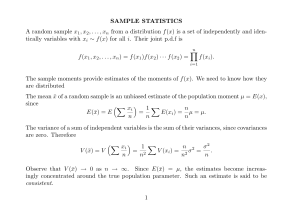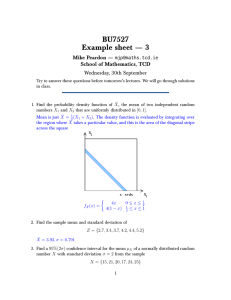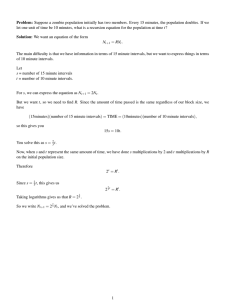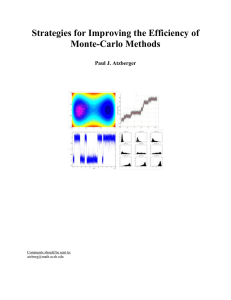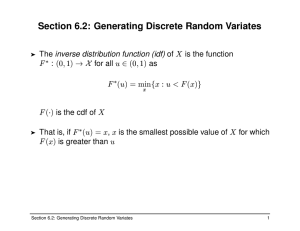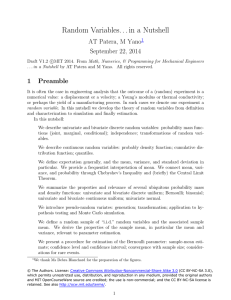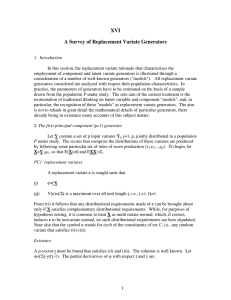Problem Set 4
advertisement
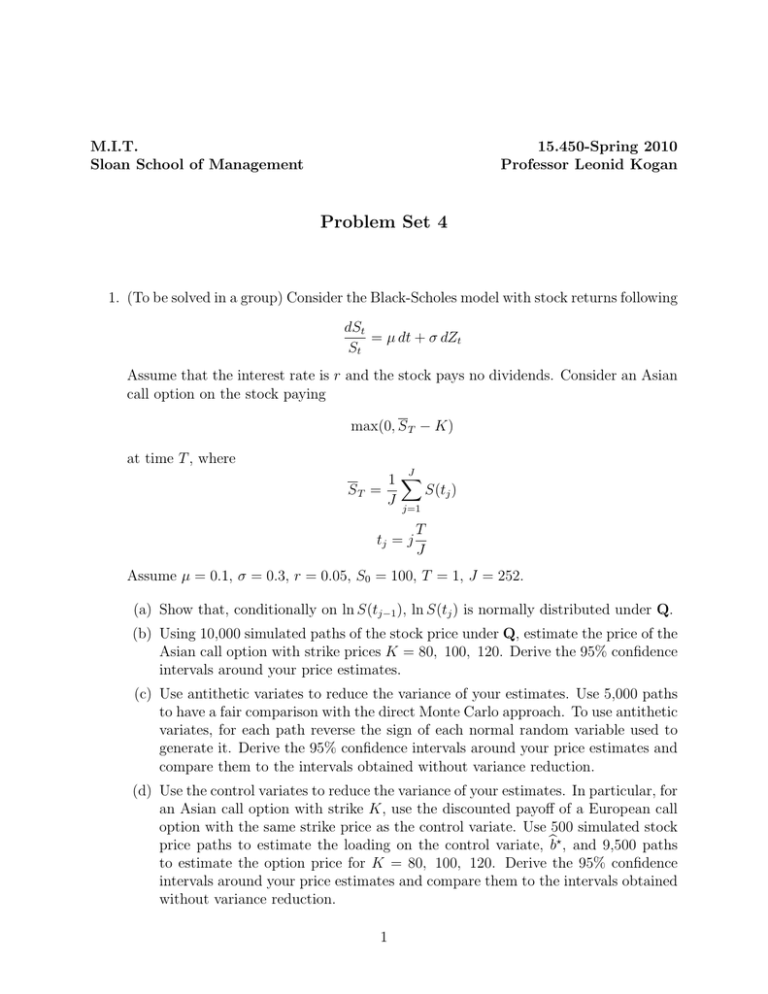
M.I.T. Sloan School of Management 15.450-Spring 2010 Professor Leonid Kogan Problem Set 4 1. (To be solved in a group) Consider the Black-Scholes model with stock returns following dSt = µ dt + σ dZt St Assume that the interest rate is r and the stock pays no dividends. Consider an Asian call option on the stock paying max(0, S T − K) at time T , where J 1� ST = S(tj ) J j=1 tj = j T J Assume µ = 0.1, σ = 0.3, r = 0.05, S0 = 100, T = 1, J = 252. (a) Show that, conditionally on ln S(tj−1 ), ln S(tj ) is normally distributed under Q. (b) Using 10,000 simulated paths of the stock price under Q, estimate the price of the Asian call option with strike prices K = 80, 100, 120. Derive the 95% confidence intervals around your price estimates. (c) Use antithetic variates to reduce the variance of your estimates. Use 5,000 paths to have a fair comparison with the direct Monte Carlo approach. To use antithetic variates, for each path reverse the sign of each normal random variable used to generate it. Derive the 95% confidence intervals around your price estimates and compare them to the intervals obtained without variance reduction. (d) Use the control variates to reduce the variance of your estimates. In particular, for an Asian call option with strike K, use the discounted payoff of a European call option with the same strike price as the control variate. Use 500 simulated stock price paths to estimate the loading on the control variate, �b� , and 9,500 paths to estimate the option price for K = 80, 100, 120. Derive the 95% confidence intervals around your price estimates and compare them to the intervals obtained without variance reduction. 1 2. (To be solved in a group) Consider a firm with assets valued at At . Firm’s total asset value evolves according to dAt = µ dt + σ dZt At The firm has multiple bonds outstanding maturing at various points in time. Assume that the firm will default on all of its debt obligations as soon as the total asset value At falls below A. (a) Using Monte Carlo simulation, estimate the default probability pτ for bonds ma­ turing at date τ . You need to decide how many simulations to use to achieve reasonable accuracy. Justify your choice. Plot pτ as a function of τ for τ = 1, 2, ..., 10. Also, compute the term structure of forward hazard rates, λt , defined by 1 − pt = exp(− t−1 � λs ) s=0 Plot the term structure of forward hazard rates. Use the following parameter values: A0 = 1, A = 0.4, µ = 0.1, σ = 0.3 (b) Using control variates, improve the accuracy of your estimation. (Hint: for any t, you can compute the probability of At ≤ A) analytically). (c) Repeat the exercise in item (2a) for A = 0.1 and A = 0.85. Comment on your results: what conclusions can you draw from this exercise about the term structure of default risk of corporate bonds? 2 MIT OpenCourseWare http://ocw.mit.edu 15.450 Analytics of Finance Fall 2010 For information about citing these materials or our Terms of Use, visit: http://ocw.mit.edu/terms.


